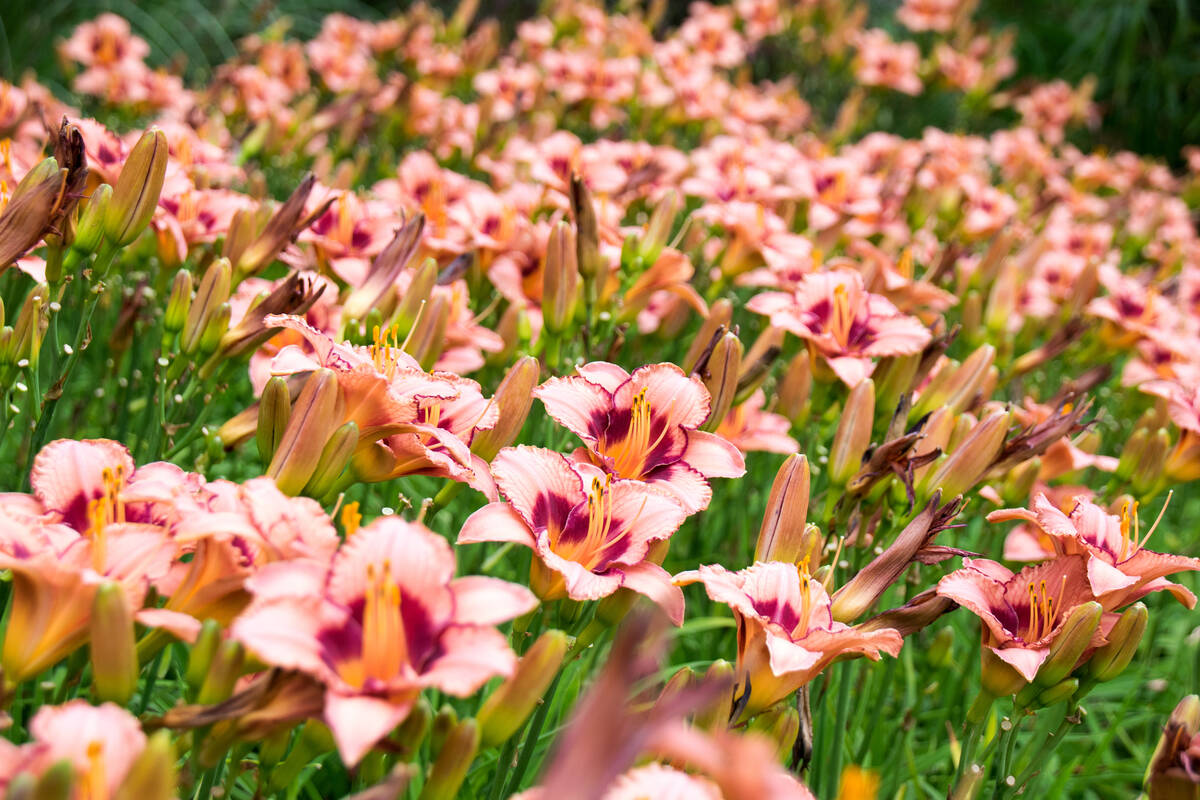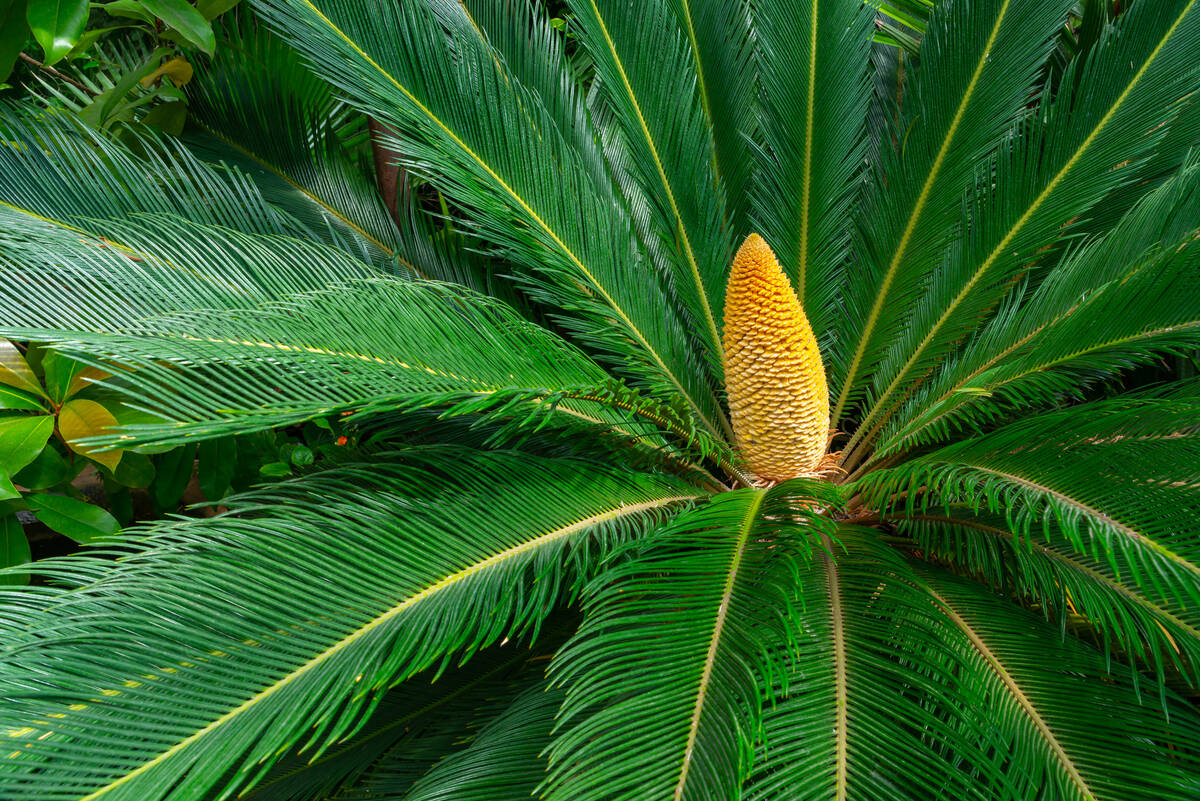Would daylilies, like roses, benefit from deadheading?
Q: I’ve read about deheading (or deadheading) spent rose blossoms. Is there a similar reason to cut the stalk of spent daylily flowers?
A: Removing the old flowers (along with any unsightly flower stalks), or deadheading, is a common practice on repeat bloomers such as roses. The reason for deadheading roses is to save the energy of the plant by the elimination of seed formation. This is thought to encourage earlier flowering of repeat bloomers such as most roses, and removing the old flowers makes the roses look more attractive.
In the case of daylilies in our climate, the same results can be expected (save energy, repeat flowering sooner, attractiveness). Be careful just to remove the flower and flower stalks, not the leaves.
Similar to roses, daylilies grow best on the east side of a home (afternoon shade) in the hot Mojave Desert, in amended soil, but can handle full sun. To flower, roses and daylilies should have at least six hours of high sunlight. Daylilies and roses can experience iron shortages periodically, so watch for that.
Q: I wanted to get your take on our vines. We are up in Reno and one of our plants hasn’t come back this spring like the others and is getting cupping and poor leaf growth. The vine next to it and all the others seem to be fine.
A: From the pictures you sent, this looks like herbicide damage. It can be hard to prove. Common symptoms on grapevines of herbicide drift include cupped leaves, downward bending of the shoots, yellowing of the leaves and stretching of the leaves and leaf veins. Damage by these types of herbicides is due to volatilization and this vapor being pushed around by the wind called spray drift. This happens when it is applied on hot and windy days, usually in the spring. Spray drift can happen any time it is hot, windy and dry.
Grapes are particularly bothered by phenoxy-type herbicides when it is hot and windy. It is recommended not to spray weed killers near grapes during hot, windy days. (It says as much on the label.)
What to do? If the grapevine is dead, you can’t bring it back to life. Document the damage with pictures and record the date that you first saw the damage. Also record the number of grapevines damaged, their stage in production, age of vines and the varieties, if known.
It is thought that some varieties and their phenology are more prone to damage than others. Be neighborly and find the possible source of spray drift without accusations. Sources include custom pesticide applicators, homeowners, golf course personnel, farmers, highway crews, etc.
Q: Each of my mature sagos (minus one) have produced new leaves during the growing season each year. One did not bear new leaves last year and hasn’t this growing season. Do you have any idea why that may be, and do you have any suggestions?
A: I think this is a light issue. Try giving your cycads (sago palms) more light. You can do this by removing the lowest fronds of your palms by early fall when it starts to cool down. Try not to remove any fronds lower than those sticking straight out from the trunk. I have found that it can be best to let palms heal after pruning. I believe this helps prevent a disease called bud rot.
If there are trees present, remove the lower limbs to let in light for your cycads any time before next early spring. I think the taller trees are preventing light from reaching your sago palms.
By the way, sago palms are slow growing, only about 1 inch per year if you are lucky.
Q: Where can I obtain mulch, the small wood chip type? I have searched all over town and can only find shredded bark.
A: You can get wood chips at a facility in North Las Vegas. It is 100 yards east from North Decatur on Horse Drive. You may pick up this wood chip mulch in your car or truck every Tuesday, Thursday and Saturday morning. If you are driving a car, bring your own large plastic bags. This is the only joint facility operated by UNR and UNLV for water savings research and demonstration of fruit trees that grow in our Mojave Desert. (Yes, mulch slows evaporative water losses.)
Take as much as you like. The source is local trees chipped as mulch, not bark mulch, which blows and floats away easily. The wood chip mulch withstands 70 mph gusts of wind and decomposes into important organics that enrich our desert soil.
Q: I have eight Australian bottle trees that I planted seven years ago. The first four years they stayed full and green. In the last three years, they lost all their leaves around this time of year. I would like to know if this is normal. I drip them at 7 and 8 a.m. for 30 minutes, five days a week. Any suggestions would be appreciated.
A: What happens to them for the two days you don’t water? In the arid lands where they grow, they don’t get water five days in a week when it’s hot. Why are you watering so often? Encourage deeper roots by watering less frequently.
Australian bottle trees get 50 to 60 feet tall, and big trees use more water than smaller trees.
The water needs to be delivered to an area that is half of the tree’s canopy. That means if a big flashlight was shining down from above, this shadow would describe the area of its canopy.
This water needs to go into the soil 3 feet deep at that size, in a basin half the size of its canopy, which is around 2 inches of water.
In other words, the trees need more water!
What to do? Your water use might go up or it might go down. I suggest adjusting the watering of these trees starting around the end of September when it gets cooler. Right now, water and keep your trees alive. Don’t change anything.
When you water in September, give them one to two hours of water. Expand the irrigation system to wet at least half of its canopy this way. Wet the roots all through its canopy to 3 feet, all at once.
Apply all that water at 7 a.m. and wait. Leaf drop is the sign you are looking for. Mark your calendar. Wet these roots all at once and down to 2 to 3 feet so that at least half the canopy is wet. That’s every time you water.
Change the days during the week you water, not the minutes needed. About 70 to 75 percent of the water you apply will be in May, June, July and August.
Bob Morris is a horticulture expert and professor emeritus of UNLV. Visit his blog at xtremehorticulture.blogspot.com. Send questions to Extremehort@aol.com.























